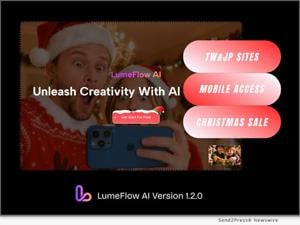New Jersey Republicans Surge in Mail-In Ballots Ahead of Election

New Jersey Republicans are demonstrating a notable increase in the return rate of mail-in ballots, signaling a potentially positive trend for GOP gubernatorial candidate Jack Ciattarelli. As the election approaches, data reveals that Republicans have achieved an early mail-in ballot return rate of 18.61%, surpassing the 16.55% return rate of Democrats. This information comes from Michael Pruser, director of political science at DecisionDeskHQ.
The uptick in mail-in ballot returns is particularly significant given the historical context; Republicans have traditionally exhibited a reluctance to vote by mail. Pollster Adam Geller, who is associated with the Ciattarelli campaign, expressed optimism regarding these early figures. “Clearly, it’s encouraging for the Republicans right now,” Geller stated, suggesting that this trend may reflect heightened enthusiasm for Ciattarelli among voters.
As the race intensifies, Brent Buchanan, president and CEO of polling firm Cygnal, noted the implications of this early data. He highlighted that the growing popularity of former President Donald Trump in New Jersey could influence Republican voter turnout. “Republicans have gotten serious about participating in early voting,” Buchanan remarked, indicating a shift that could favor the GOP across various contests.
The political landscape in New Jersey has shifted in recent years, with Kamal Harris winning the state by a narrow 6% margin in the 2024 presidential election, the closest Democratic victory in New Jersey since 1992. Current polling suggests that Trump has gained traction, even outperforming outgoing Democratic Governor Phil Murphy in some surveys conducted by Emerson College.
Despite the positive early mail-in ballot returns for Republicans, analysts caution against drawing definitive conclusions at this stage. Geller pointed out the inherent unpredictability of mail-in voting, as the volume of ballots returned can fluctuate significantly from day to day. “You don’t know from one day to the next what you’re going to get,” he explained, emphasizing the importance of monitoring which counties may lag behind in ballot submissions.
The landscape remains complex, as Dave Wasserman, editor of the nonpartisan Cook Political Report, emphasized that the voting dynamics could evolve rapidly. He noted that Democrats might return their ballots later in the process, which could alter the early momentum observed. Wasserman also highlighted the potential influence of independent voters, who currently have a lower mail-in ballot return rate of 9.32%, according to Pruser’s analysis.
In terms of voter demographics, the numbers reveal a significant disparity between party registrations in New Jersey. Democrats outnumber Republicans by a margin of 2,391,043 to 1,568,949, with approximately 2,161,088 registered independents. This demographic landscape poses a challenge for Ciattarelli, who has faced a battle against the odds in a state where Democrats have held a significant majority.
Initially, Representative Mikie Sherrill appeared to be the frontrunner in the gubernatorial race, with some polls giving her a near double-digit lead. However, recent polling indicates a tightening contest, with an internal poll from Geller showing Ciattarelli in a narrow lead. An Emerson College Polling survey corroborated this trend, indicating that the candidates are now nearly tied.
As the election draws closer, national Democratic officials have expressed concern regarding the shifting dynamics in New Jersey. Currently, Sherrill holds a slim advantage of 3.3% percentage points over Ciattarelli, as reported by the latest aggregate from RealClearPolitics. This is a notable decrease from her previous lead of 8.3% points just a month ago. For context, the RCP aggregate had previously underestimated Ciattarelli’s support by around five points in the 2021 gubernatorial race, where he ultimately lost to Governor Murphy by approximately three points.
As the candidates prepare for a crucial debate scheduled for Wednesday, all eyes will be on the strategies they employ to capture the attention of undecided voters. New Jersey residents will cast their ballots on November 4, 2024, marking a pivotal moment in the state’s political landscape. The outcome of this election is likely to hinge on voter turnout and the evolving sentiments among key demographics, particularly independents.






